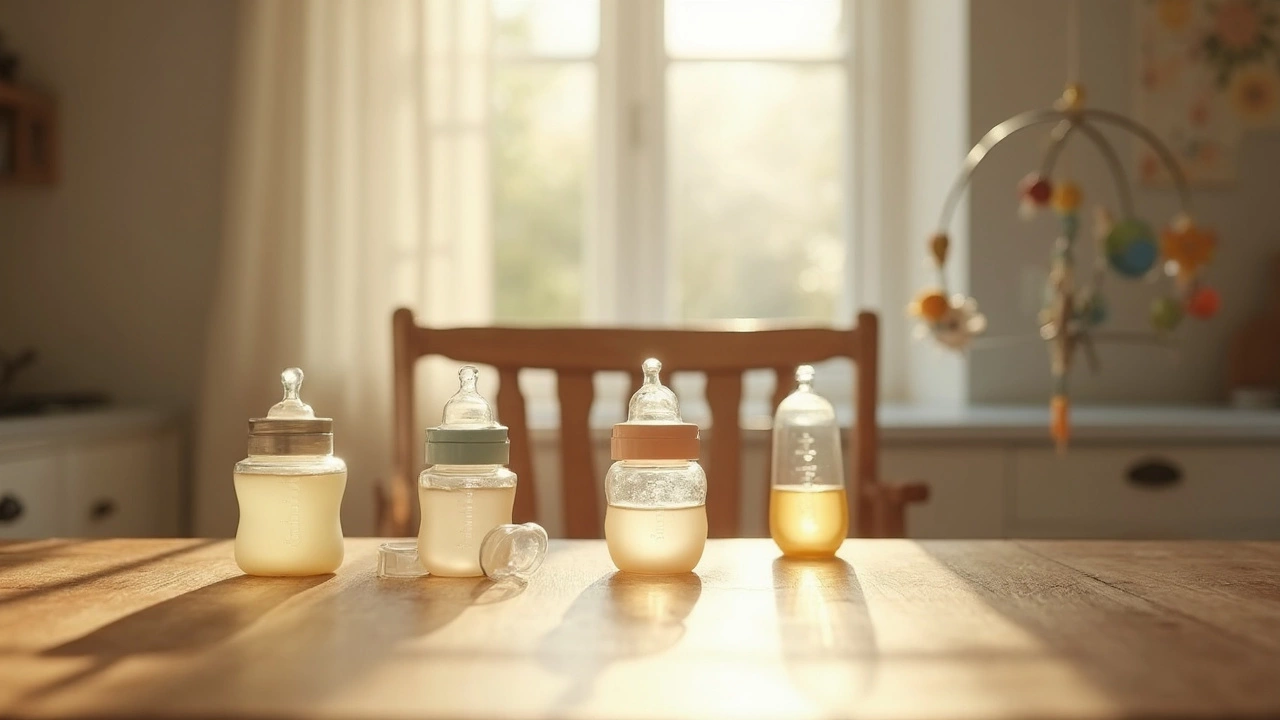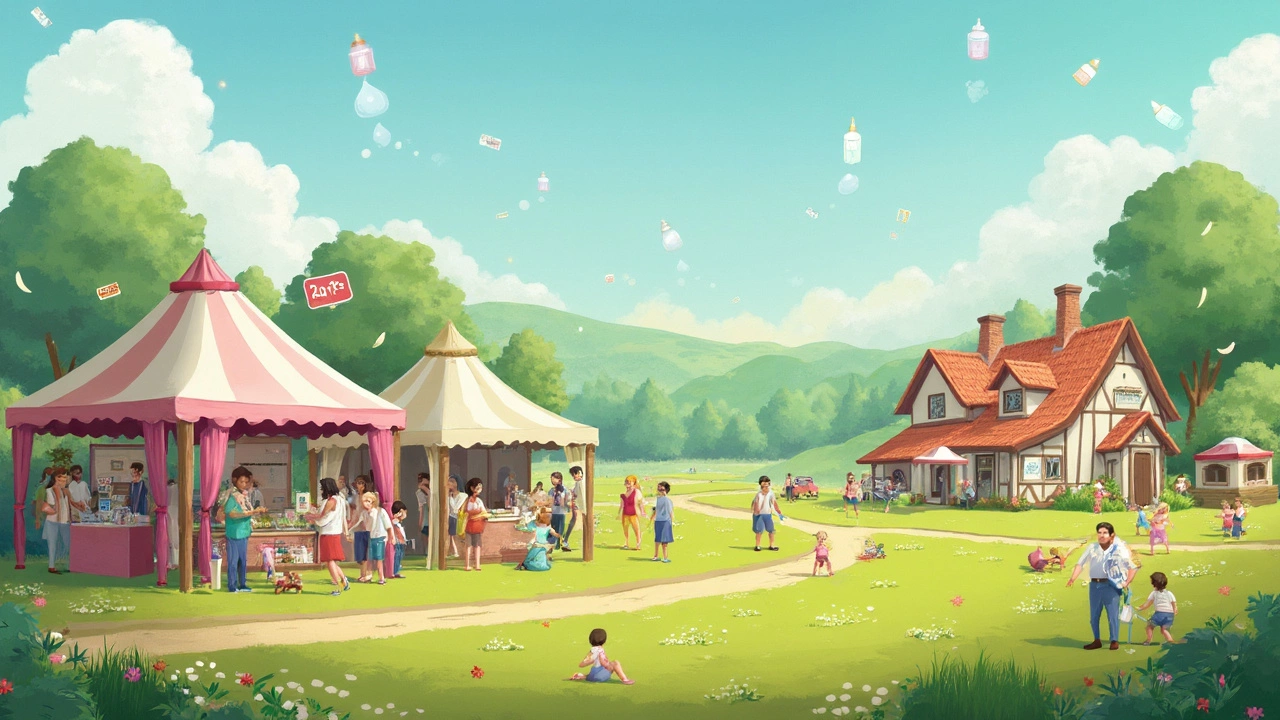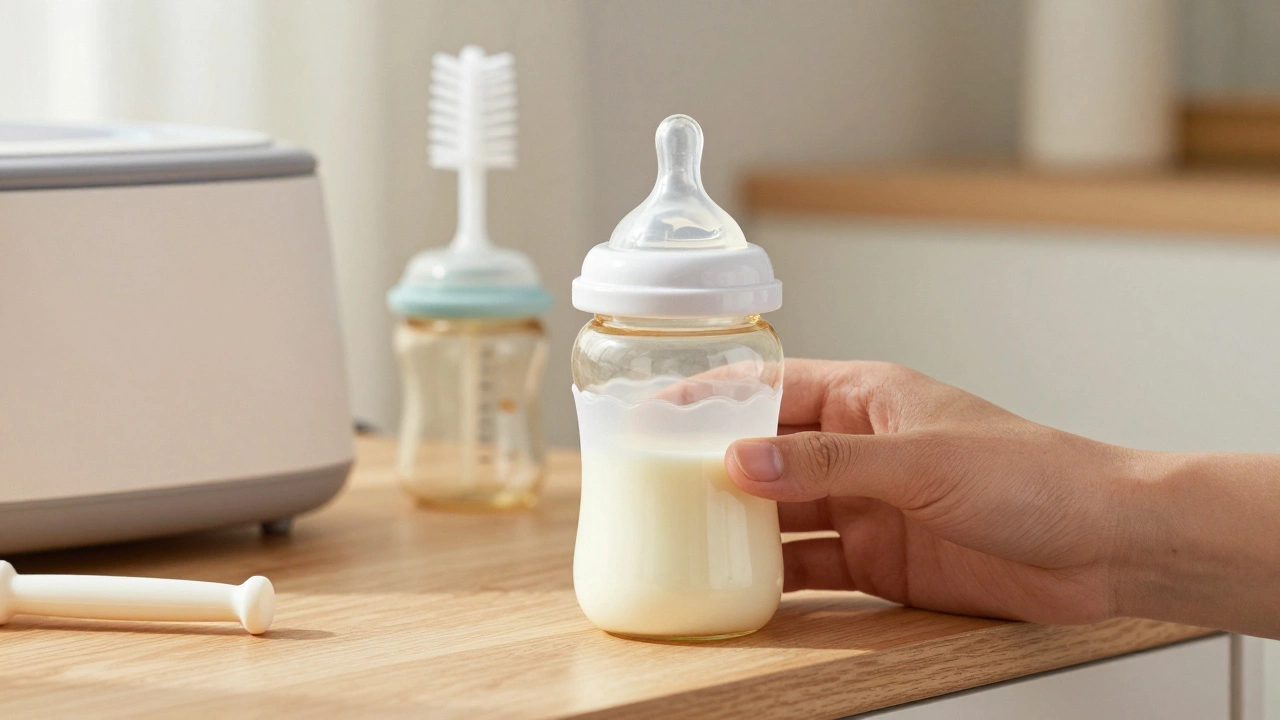Safest Baby Bottle Materials: Choosing the Best for Your Baby

When it comes to baby bottles, figuring out the safest material can feel like trying to read a super complicated map! But don't worry, I've got your back. Let's kick things off with the classics: glass and plastic. Glass bottles have been around forever and are known for being super sturdy and easy to clean—no gross bottle stains here! But their weight and that nerve-wracking feeling when you think they might break can be worrisome.
Plastic bottles are light and less likely to shatter, but you must be careful about what's in them. Look out for BPA-free labels to keep any sneaky chemicals at bay. Plus, giving them a good scrub can stop bacteria from throwing a party in the nooks and crannies.
So, what's the buzz about these new stainless steel options? Parents are raving because they last ages, don't break, and keep drinks warm or cool for longer. A handy tip: double-check they're made from food-safe stainless steel before you swipe that credit card.
More parents are looking for eco-friendly choices, too. Options like bamboo or silicone bottles are stepping up to the plate, putting less strain on Mother Earth. So, when it comes to picking the right bottle, think about your little one's safety, your comfort, and how you can give a little love back to the planet!
Glass vs. Plastic
When it comes to choosing baby bottle materials, it's a close race between glass and plastic. Both have their unique selling points, and knowing these can help make the decision process a bit smoother.
Durability and Safety
Glass bottles have been the go-to option for ages. They're sturdy, and not just physically. Glass is non-porous, meaning it won’t absorb smells, colors, or flavors, keeping your baby’s milk fresh and pure. They're also free from harmful chemicals like BPA or BPS.
On the downside, glass bottles can be heavy and, let’s face it, dangerously breakable. Think about those midnight feedings when you're half-asleep. A broken bottle can cause some chaos!
Convenience and Safety
Now, let's yak about plastic bottles. These guys are lightweight champs, easy to tote around in diaper bags, and much less likely to shatter. But they're not all sunshine and rainbows—make sure they’re labeled as BPA-free and BPS-free to avoid nasties leaching into your baby’s milk.
Plastic bottles are a breeze to handle for on-the-go parents, but show them some TLC. Over time, repeated heating and washing can wear them down, making them prime real estate for bacteria if not carefully maintained.
Sustainability
Environmental impact is another point to ponder. Glass is recyclable and lasts longer if treated kindly. Plastic, on the flip side, can pile up as waste despite being recyclable.
| Material | Advantages | Disadvantages |
|---|---|---|
| Glass | Non-toxic, easy to clean, no flavor transfer | Heavy, breakable |
| Plastic | Lightweight, shatter-proof | Potential chemical leaching, needs replacing more often |
So, which is better? It boils down to what fits your lifestyle and safety comfort level baby bottle safety is personal. Some parents keep both types handy to swap as needed. It’s all about what keeps you and your little one smiling!
Stainless Steel Advantages
Stainless steel is making waves as the new kid on the block in the baby bottle world. Curious why it's getting all this attention? Let's break it down for you.
Durability & Longevity
No more worrying about dropping bottles and watching them shatter. Stainless steel bottles are tough—they can take a beating and keep on ticking. Whether you're dealing with a toddler's tantrum or just juggling a million things at once, these are built to last.
Safe & Chemical-Free
One reason stainless steel baby bottles are joining the ranks of the safest choices is because they don't leach harmful chemicals. Unlike some plastics that might contain BPA or phthalates, stainless steel is inert. It means no nasty stuff sneaking into your baby's milk.
Temperature Regulation
Want to keep milk warm or cool longer? Stainless steel bottles have got you covered. Their natural insulation helps regulate temperature better than most options. Plus, they’re great for those spontaneous outdoor adventures where you’re miles away from a microwave or fridge.
Environmental Friendly
If eco-friendliness is on your checklist, you’re in luck. By swapping to stainless steel, you're opting for a material that’s not only recyclable but also hard-wearing, meaning you're less likely to replace it frequently. Less waste, more benefits!
| Material | Longevity | Eco-Friendliness |
|---|---|---|
| Stainless Steel | High | Very high |
| Plastic | Medium | Low |
| Glass | Medium-high | Medium |
Remember though, some stainless steel bottles come with plastic lids or silicone seals. It's a good idea to ensure these parts are also BPA-free and safe for your little one. So, checking those labels can save you unnecessary hassle.
Choosing a stainless steel baby bottle can be a smart move, especially if you're looking for something robust, safe, and forward-thinking. After all, giving your baby a healthy start is what matters most.

Eco-Friendly Options
Looking for something kinder to the planet while keeping your baby safe? Eco-friendly baby bottle materials are all the rage, and for good reason. With sustainability becoming a top priority, more parents are turning towards materials that aren't just good for their baby, but also good for Mother Earth!
Let's talk bamboo bottles. Lightweight and biodegradable, they're a trendy choice among eco-conscious parents. Because bamboo grows so quickly, it's a great renewable resource. While these bottles often come with an interior liner of another material, they’re a fantastic step toward reducing your carbon footprint.
Silicone Bottles: The Flexible Option
Silicone is another contender in the eco-friendly baby bottle world. It feels like a blend between rubber and plastic, but don't let that fool you—it’s non-toxic and durable. Plus, they’re microwave and dishwasher safe, making reheating milk or cleaning bottles a total breeze! Just make sure they're free from fillers or potentially harmful additives.
The Recyclability Factor
While glass and stainless steel bottles are classic choices we all know and love, they have an eco-friendly perk: they're recyclable! Glass, in particular, can be recycled over and over without losing purity. And stainless steel? Talk about durability—less breakage means less waste.
Check out this handy comparison for some quick insights:
| Material | Renewability | Durability | Recyclability |
|---|---|---|---|
| Bamboo | High | Medium | Low |
| Silicone | Moderate | High | Moderate |
| Stainless Steel | Low | Very High | High |
| Glass | Low | High | Very High |
When you pick your next baby bottle, consider stepping towards eco-friendly choices. It's a little change that could make a big difference, for you and the environment!
Tips for Choosing Wisely
Picking the safest baby bottles doesn't have to be overwhelming, promise! Here are some handy tips to help you choose wisely and keep your little one happy and healthy.
1. Safety First!
Always check for safety certifications on the packaging. Look for BPA-free labels on plastic bottles, and if you're considering stainless steel, make sure it's food-grade. It's worth diving into user reviews to hear from other parents about any breakage or safety concerns they've faced.
2. Think About Weight and Grip
While glass bottles have their perks, they can be heavy for small hands. Look into bottles with silicone sleeves to prevent slipping. If your baby will hold their bottle soon, finding a lighter option might save you some tension and little tantrums later on.
3. Cleaning and Maintenance
Who has time for complicated cleaning routines? Make sure whatever bottle you choose can be scrubbed easily—a wide neck is often your best friend! Sterilizing options are a plus, especially for newborns, so consider how you'll clean bottles and if your chosen material handles high temps well.
4. Budget-Friendly Choices
It's not always about the most expensive option. There's a wide range of bottles out there in terms of price, and you can always test one or two and see how they work for you. Often, buying a bottle set can save you a few bucks.
5. Consider Eco-Friendly Options
If you're leaning green, you'll be happy to know that more eco-friendly baby bottles are hitting the shelves. Check out options like silicone or even bamboo, which aim to reduce environmental impact while keeping your child safe.
Remember, there's no one-size-fits-all solution here. Your choice depends on weighing all these factors based on what's important to you and your baby. And it never hurts to ask other parents—after all, who doesn't love a good parenting chat over coffee?
